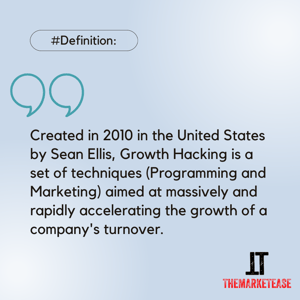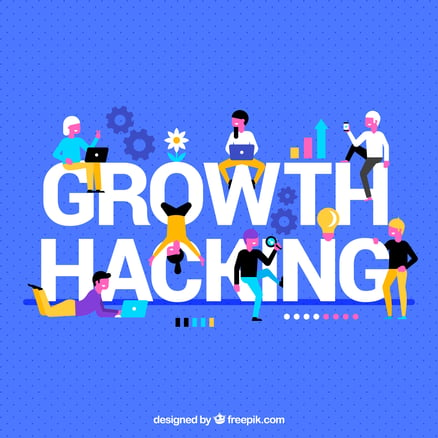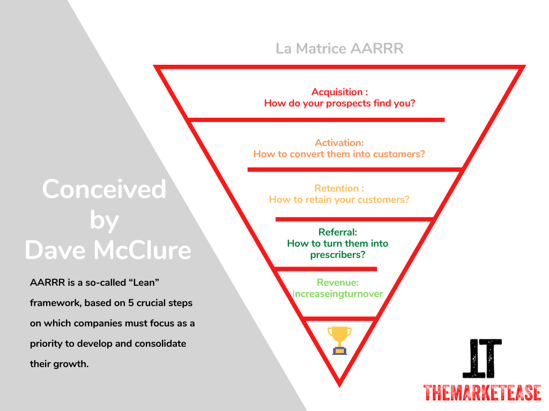In this article, I will give you a quick overview of the Smarketing method, and help you use it to...
What is Growth Hacking?
Right now, many are talking about Growth Hacking to help their companies overcome the current crisis and increase their growth. But what is growth hacking really and why is it important to include it in your marketing strategy?
 Why should you implement it in your business?
Why should you implement it in your business?
It goes without saying that every business strives to generate more revenue from year to year, but some initiatives take time to bear fruit and bring benefits that translate directly into sales.
This is where Growth Hacking comes in. Thanks to its complex mix of tricks (hacks) and strategy, it offers new growth prospects based on the creativity and sometimes boldness of your growth hacker. If you are willing to take the risk, growth hacking will bring you results that go beyond the established framework. It allows you to pick up your customers where they are without worrying about how to reach them (all means are fair).
Another important aspect is that you can stand out from your competition by placing your brand and products where others dare not go. Of course, it's not enough to do anything and expect results. Your campaigns must be relevant and fit the image you want to have online.
What are the ground rules?
The AARRR matrix is the foundation of growth hacking. It allows companies to focus on the steps they need to take to increase their sales. This method is very interesting because it puts the customer at the center of the strategy by making them an advocate for the brand. Who better than your customers to promote your brand and make it known?
Focusing on customer loyalty will help you secure sales by building a loyal customer base. These are easy to reach through retargeting or email campaigns, for example.
 Acquisition :
Acquisition :
This is the first A in the AARRR framework, it describes how people find you online and eventually convert into customers. It is important to see the acquisition part globally. This means looking not only at visitors to the site but also at how many and how those visitors convert into customers. You need to track every step of your customer journey (buyer journey) in the sales funnel and not just look at the final conversion into a paying customer. Every micro-conversion along the way counts (opt-in).
All these steps before converting into a customer count as a micro-conversion and should be measured:
(a) understand the customer journey
(b) optimize it to increase conversion rates.
Measuring the different interactions with your digital ecosystem allows you to set up a lead-scoring system. This allows you to classify your prospects based on the number of interactions they have with you. Obviously, the prospects with the most opt-ins (CTA on a blog or website, sign up for a webinar, download a whitepaper, etc.) are the ones who have the most interest in your business.
Activation:
This is about the first experience your customer has with your product. It's not enough to get people to visit your website and see the products you have on display. At this stage, the visitor needs to be brought to the "aha moment", the proof. This is the moment when he first realizes the real value of your product and considers buying it. So the activation is the moment when your prospect is about to become a customer, thanks to all the efforts you have made in advance (UX, messages on the website, relevant offers with the spirit "customer first", ...)
If you master activation, you can increase the number of visits (purchases) for each customer. In this way, you increase the Life Time Value (LTV), the total value of a customer and his life cycle, thus increasing your sales.

Retention:
In other words, the loyalty of your customers. How can you make them buy again on your website every time they have a need that suits you? Again, customer retention allows you to increase LTV with the tools you use (email campaigns, retargeting, affiliate programs, etc.).
The opposite of loyalty is churn. It is important to measure the number of lost customers for each offer to check its quality.
You can use the churn rate to determine if you have achieved a good match between the product and the market. If many customers leave your products after the first use, it's clear that something is wrong with either your product or your message.
Referral:
The best way to drive your growth is through referrals. Why spend large sums of money on marketing campaigns to a cold audience when your customers can be trusted within their networks?
To really leverage referrals, you need to set up a systematic process that encourages your customers to recommend you. The goal is to create a win-win situation where your customers receive discounts, exclusive products, coaching, etc. And they generate a constant stream of new potential customers who are ready to convert.
Revenue:
If you have followed the previous four steps, your income should already be flowing nicely. But what's the best way to increase your revenue?
By increasing your customer's LTV and decreasing your cost of acquisition (CAC). Your customer's lifetime value is the amount of revenue you earn from them over their lifetime, or rather their lifetime as a customer of your business. Your customer acquisition cost is the amount you spend to acquire a customer. This includes costs for marketing, sales, meetings, dinners, treats, or whatever it takes to convert your customer. A good ratio of LTV to CAC for growth is 3 to 1.
If you want to lower your CACs, you need to optimize your sales funnel.

How can you develop growth hacking in your business?
As you must have understood, you need to recruit the person(s) required to implement this model. You also need to identify the most effective channels to reach your target audience (personas) and launch your test campaigns. The goal is simple: create the maximum number of campaigns in A/B testing, analyze the feedback and keep only the successful models to duplicate them by adapting them for all your products.
The AARRR framework fits very well with Social Media Marketing because it allows you to boost lead generation in time, depending on the seasonality of your offers and products, as well as their needs.

.png?width=50&name=profile-pic%20(8).png)
.jpg?width=250&height=125&name=Project%201%20(1).jpg)

.png?height=200&name=Mon%20projet%20(1).png)
